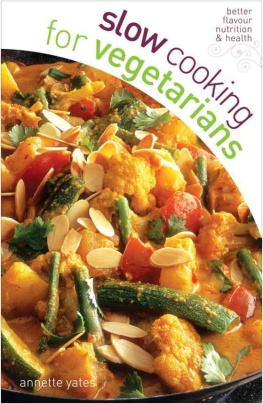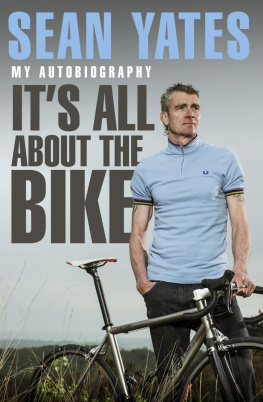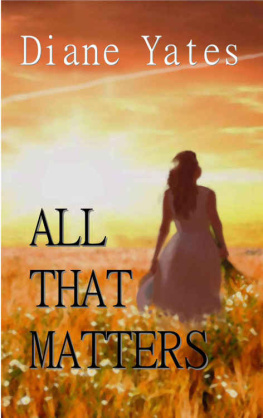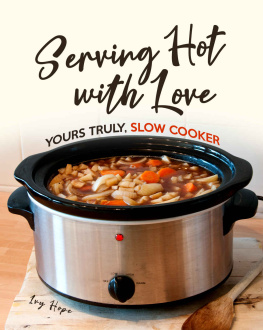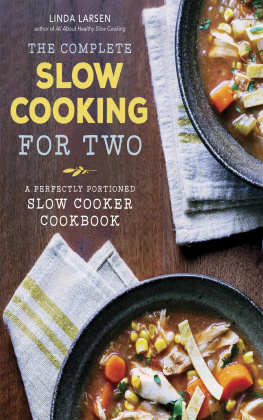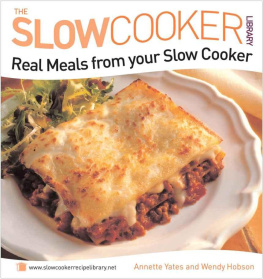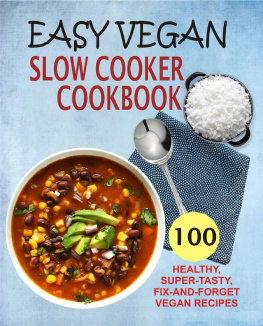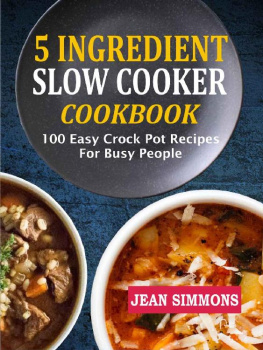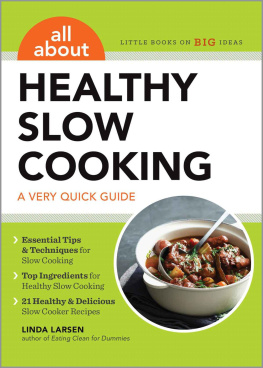Yates - Slow Cooking for Vegetarians
Here you can read online Yates - Slow Cooking for Vegetarians full text of the book (entire story) in english for free. Download pdf and epub, get meaning, cover and reviews about this ebook. City: London, year: 2007, publisher: W Foulsham & Co. Ltd, genre: Home and family. Description of the work, (preface) as well as reviews are available. Best literature library LitArk.com created for fans of good reading and offers a wide selection of genres:
Romance novel
Science fiction
Adventure
Detective
Science
History
Home and family
Prose
Art
Politics
Computer
Non-fiction
Religion
Business
Children
Humor
Choose a favorite category and find really read worthwhile books. Enjoy immersion in the world of imagination, feel the emotions of the characters or learn something new for yourself, make an fascinating discovery.
- Book:Slow Cooking for Vegetarians
- Author:
- Publisher:W Foulsham & Co. Ltd
- Genre:
- Year:2007
- City:London
- Rating:5 / 5
- Favourites:Add to favourites
- Your mark:
- 100
- 1
- 2
- 3
- 4
- 5
Slow Cooking for Vegetarians: summary, description and annotation
We offer to read an annotation, description, summary or preface (depends on what the author of the book "Slow Cooking for Vegetarians" wrote himself). If you haven't found the necessary information about the book — write in the comments, we will try to find it.
Yates: author's other books
Who wrote Slow Cooking for Vegetarians? Find out the surname, the name of the author of the book and a list of all author's works by series.
Slow Cooking for Vegetarians — read online for free the complete book (whole text) full work
Below is the text of the book, divided by pages. System saving the place of the last page read, allows you to conveniently read the book "Slow Cooking for Vegetarians" online for free, without having to search again every time where you left off. Put a bookmark, and you can go to the page where you finished reading at any time.
Font size:
Interval:
Bookmark:

Eating meals without meat or fish is no longer regarded as wacky, out of the ordinary or an exercise in self-denial. In fact, millions of people in the UK today lean towards a diet that is partially or entirely vegetarian.
I will come clean right now - I am not a vegetarian. I just love vegetables. I still enjoy meat in small quantities and fish at least twice a week, but more and more I am aware that I am choosing meals that are made up entirely of vegetables, rice and grains. Not only that, but I often find that my friends and family also prefer to opt for dishes without meat or fish.
These days I find that, like so many other people, I have less and less time to spend on actual cooking. As a result I tend to opt for dishes that can be assembled in minutes and either require minimal cooking time or can be left to cook gently and slowly for hours while I am busy doing other things. And this is where the slow cooker comes in really handy.
A slow cooker is, quite simply, a casserole powered by an electric element that uses no more energy than a lightbulb. It can be left to cook your meal, day or night, and the long, gentle cooking means that wonderfully complex flavours develop and there is little or no risk of the food drying out. You can slow-cook every kind of dish, from soups to cakes and puddings, and there are many dishes that are ideal for making in a slow cooker, even though they may cook in a relatively short time (say in an hour or two). The advantages are that rather than switch on the oven - expensive - or stand over the hob - time-consuming - you can simply leave the food to cook on its own, saving you both money and time.
This is not a book about how to be a vegetarian or how to use a slow cooker per se. It is simply a collection of delicious recipes for your slow cooker that just happen to be vegetarian - slow cooking married with vegetarian eating. The dishes I've chosen are those that have been appreciated by my family and friends, vegetarian and meat-eaters alike. I hope you will enjoy them too.
Do note that many of the recipes contain dairy products and so are not suitable for vegans. They can, however, be easily adapted by substituting the many vegetarian alternatives, such as soya milk and cream and vegetarian cheeses, that are readily available in supermarkets.
Happy (slow) cooking!
There are many different makes of slow cooker and they come in a wide range of shapes and sizes. Your manufacturer's instruction booklet is the best guide for using your particular slow cooker, so do check with it regularly.
Getting started
- All slow cookers have at least two settings, High and Low. The Low setting cooks very slowly with only gentle simmering - this is particularly suitable for casseroles and custard puddings. On the High setting, food is cooked at a higher temperature and any liquid bubbles constantly - ideal if you want to speed up the meal, and perfect for cooking puddings and cakes that contain raising agents. Some slow cookers have an Auto-cook function - this starts cooking on High, then automatically switches to Low for the remainder of the cooking time (this is very useful if you need to put all the ingredients in cold).
- The cooking time on Low is generally just over twice that on High.
- Though it's not always necessary, I usually switch on the slow cooker and preheat it on High while I am preparing the ingredients. Always check with your manufacturer's instruction book to see what it recommends. Preheating is essential if you plan to put all the ingredients in cold and then cook on the Low setting. It is also important when steaming puddings. Always preheat on High with the lid on.
Preparing ingredients for slow cooking
- Thaw frozen foods before adding them to the slow cooker. Frozen vegetables need less cooking than fresh and are best added to the slow cooker towards the end of the cooking time - usually only for the final 30 minutes.
- Cut root vegetables into even-sized pieces and push them down into the cooking liquid to encourage even and thorough cooking.
- I usually soften onions and root vegetables on the hob before adding them to the slow cooker. Not only does this improve the appearance, texture and flavour of the finished dish, it also helps to raise the temperature of the vegetables to a point where they can begin to cook. However, if you do not have time for this, you can usually put all the ingredients in cold but remember that the cooking time will be longer.
- Soak dried beans in plenty of cold water before slow cooking. Red kidney beans should be boiled rapidly for 10 minutes before being added.
- Use 'easy-cook' rice for best results and rinse it first.
- Do not be tempted to leave prepared raw ingredients in the slow cooker for cooking later. Store them in the fridge until you are ready to start cooking.
- Season sparingly before cooking - flavours are concentrated in the slow cooker, so it's best to adjust the seasoning to taste towards the end of the cooking time.
- Thickening agents can be added either at the start or near the end of cooking. For instance, if you are softening vegetables on the hob, stir in some flour before adding the cooking liquid and bringing to the boil. If you prefer to season at the end of cooking, blend a little flour or cornflour (cornstarch) with cold water to make a smooth paste and stir into the slow cooker 30 minutes to 1 hour before the end of cooking.
- Your slow cooker will work best if it is at least one-quarter full, up to a maximum of 2.5 cm/1 in from the top (check with your manufacturer's instruction book).
- Always make sure there is some liquid in the slow cooker during cooking.
During cooking
- Resist the temptation to lift the lid and peep during cooking. This will cause a marked drop in temperature, slowing down the cooking process. For each time you open the lid, you will need to add 15-30 minutes to the total cooking time.
- If the food is not cooked after the recommended time, switch the slow cooker to High and cook for a further 30 minutes to 1 hour.
- To prevent milk and cream separating during cooking, they are usually best added to the slow cooker for only the final 30 minutes of cooking.
- Pasta and rice are best added to soups and casseroles for the final 30 minutes of cooking.
- On rare occasions when food in the slow cooker may have become over-dry or too thick (maybe because you arrive home much later than planned), you can add extra hot liquid, such as water or stock. Always switch off the power before you pour it in.
- When cooking cakes and puddings, check that the dish or basin you intend to use will fit comfortably in the slow cooker with the lid on.
- When a dish is cooked and you want to keep it warm, switch the slow cooker to the Low setting. The food may need stirring occasionally to prevent its surface from drying out.
- If your slow cooker has a removable pot, you can put it under the grill (broiler) or in the oven to brown any toppings you have added. Check your manufacturer's instruction booklet for details.
Care and hygiene
- Do not store cooked food in the slow cooker. Any leftover food should be transferred to a container to cool completely, then chilled in the fridge or frozen.
- Do not reheat cooked food in the slow cooker - it is too slow and the temperature is not high enough to kill any bacteria.
Font size:
Interval:
Bookmark:
Similar books «Slow Cooking for Vegetarians»
Look at similar books to Slow Cooking for Vegetarians. We have selected literature similar in name and meaning in the hope of providing readers with more options to find new, interesting, not yet read works.
Discussion, reviews of the book Slow Cooking for Vegetarians and just readers' own opinions. Leave your comments, write what you think about the work, its meaning or the main characters. Specify what exactly you liked and what you didn't like, and why you think so.

